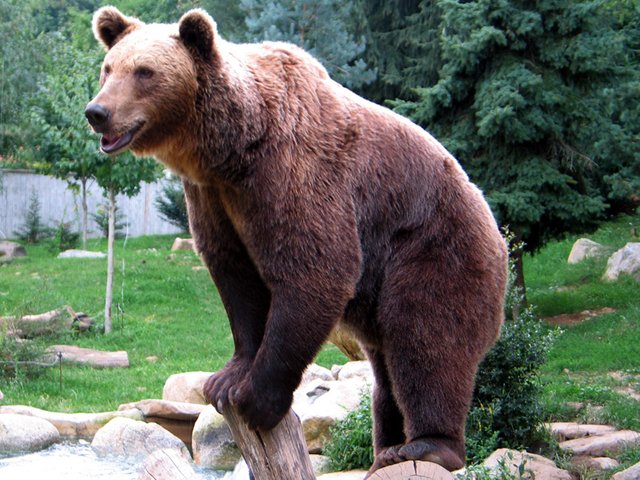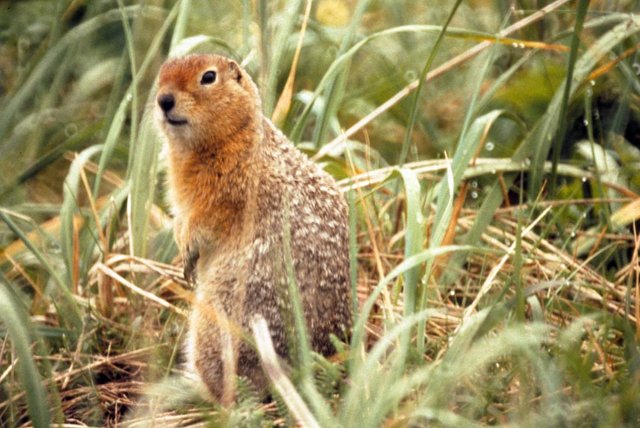The biological secrets behind the hibernation of brown bears (Amazing Animal Adaptations #2)
Brown Bears (Ursus arctos) are remarkable animals, having an enormous distribution all across Eurasia and North America. They are among the largest terrestrial carnivores, only having the polar bear (Ursus maritimus) beating it in terms of average body size.
A lot of people thinks that the brown bears are actually lots of different species, but that is not true. Both the Grizzly bear, Kodiak bear, Alaska brown bear, Eurasian brown bear and lots of other local variants are the same species. However, they are separated into subspecies, which means they are the same species, but their morphology differs. This can be seen easily in different body sizes and fur color in the different subspecies.
Getting to know the different subspecies can be pretty confusing. Most scientists agree to use 16 global subspecies when talking and writing about the brown bear, but some people thinks it’s better to use a system with as much as 90 different subspecies. Becoming familiar with all the differences between all the different subspecies is a lot of work, but it is really rewarding once you start to learn it.
In this post of Amazing Animal Adaptations I want to write a little bit about the brown bears’ ability to hibernate during the winter. Everyone knows that they hibernate, but the details of the hibernation is not as well known, but it is really fascinating.
Just a quick note because going into the main article: most of my knowledge comes from the Eurasian brown bear subspecies, so some of this information might be wrong for the other brown bear subspecies. So, keep in mind that for the rest of the post we are generally talking about the Eurasian brown bear (Ursus arctos arctos).

An Eurasian Brown Bear. Image by Jean-noël Lafargue, posted with the Free Art License.
Why do brown bears hibernate?
The main reason why bears go into hibernation during the winter is that it is very difficult for them to find enough food at that time. During the spring and summertime it can easily find lots of herbs and other food without much trouble. They will eat pretty much anything they find, including sheep, grass, rodents, fruit, berries, moose, ants or roots from plants. At the winter, a lot of these food sources a difficult to get their paws on, but they still need a steady supply of food to maintain their large body mass. This is where hibernation comes into play. By sleeping most of the winter they can reduce their need for energy (in form of food), and be able to survive to spring without a lot of trouble.
Before they go into hibernation the brown bears will eat a lot of food to store energy in the form of extra fat cells. This is used as a food reserve during the winter, and it is crucial for the bears to have this energy source. The fat will be reused by breaking the cells down to water and calories (food).
Males will be hibernating the shortest amount of time, closely followed by females with or without one-year old cubs. These groups will generally hibernate for about 5 to 5.5 months. The pregnant females will however, on average, hibernate for one extra month. They will give birth to the cubs in the den, and therefore exit the den a month later to give the cubs a good start to their life. I’m going into more detail on the den birthing a little bit later in this post.
What dens do they use?
Again, remember that we are talking about the Eurasian Brown Bear. Studies from around Norway has told us that most of the brown bears prefers to create their own dens out of old anthills. These are abandoned by the ant colonies, and gives the brown bears a perfect shelter to use during the winter.
Other bears find simpler types of dens, such as naturally formed caves. These are already formed by the nature, so the bear does not need to spend any time or energy to create the den. The older males are the ones who prefer this, and are okay with the trade-off that the naturally formed caves have. The downsides is that it is less protected from intruders, and this is possibly the reason why the older (and larger) males go for this types, while the smaller males and females tend to pick other dens.
Some brown bears will also make their den out of soil formations. They make the den by removing dirt and other obstructions from the soil, and other than that it’s a lot like the anthill den. It provides a stable temperature, and they can seal off the entrance.
Some of the largest males also make what is known as a nest den. This looks like a gigantic bids’ nest, and is made from branches. The male bear with this type of den simply goes to sleep in the middle of the nest and let the snow form the protective cover. This type of den is pretty rare (at least here in Norway where the data is from), but finding one in the wild is really cool! In order to make this den type viable, the bear needs a lot of fat, because the snow will not be as insulating as an anthill/soil + snow cover.

Image by Malene Thyssen. Posted with the GNU Free Documentation License.
How can they survive the winter in the den?
This is where the really cool adaptations come into play. The brown bears has several adaptive strategies to be able to hibernate during the winter. Firstly, it’s worth noting that bears are not true hibernators. They will not have a body temperature that is just above the freezing point like other true hibernators will. For example, the Arctic ground squirrel (Spermophilus parryii) will have a brain temperature just above freezing point, while the body temperature can be as low as -2.9 °C.

Spermophilus parryii, a true hibernator. Image from Wikimedia Commons, marked as Public Domain.
Brown bears does not have this extreme type of hibernation, but will still have a lower heart rate, breathing rate and metabolic rate. The temperature of the body is reduced, but it will not go as low as the temperature of the outside of the body.
Due to the fact that they are not true hibernators, they can awake really quickly if required. This means you should stay away from the dens, even if they are asleep! However, they are one of the hibernators that never need to wake up to eat, drink or pass waste during the winter.
In order to get the nutrients they need during the hibernation, bears will use the extra fat cells to recycle the nutrients. A fat cell will provide the brown bear with water and calories. They still need nitrogen and proteins, and just like starving humans they get this from breaking down muscle and organ tissues. Pretty straight forward metabolism actually, but there’s still a difference that makes hibernation a perfect adaptations.
The urine most mammals would waste in the winter is actually put to good use for hibernating bears. Their waste canals are sealed off before they go into hibernation, and the urine is recycled. The urea is used to provide nitrogen for building new muscles. This prevents the brown bear from losing muscle during the hibernation, and while some muscle tissue will get teared down from regular catabolism, the urea cycle makes sure the muscle is replaced with the nitrogen from the urine.
The ability to use their urine to regenerate their muscle tissues is pretty amazing, and is certainly an adaptation that is worth studying further. Imagine if humans were able to replicate this ability!

Image by Malene Thyssen. Posted with the GNU Free Documentation License.
Delayed implantation: how the females make sure their cubs can survive the first winter
Bears have another fantastic adaptations, which is called delayed implantation. This allows the female bears to not get pregnant until they are ready, even if they have mated. The regular mating season is during the summer, but the female will usually let the embryo “wait” until late fall before allowing it to impregnate her properly.
During the time between the mating and the pregnancy, the female will have to find a lot of food to make big fat reserves. If she carries forth cubs she will need a lot more fat to provide enough calories for lactation, which requires an extreme amount of energy. If she is unable to get enough fat before having to go to hibernation, she can simple choose not to let the embryo develop, and she will not become pregnant. By doing this she will reabsorb the embryo, and reuse it for the next season. This allows her to use the fat she has to survive the winter herself, and try to get more fat next winter.
The cubs will be born inside the den while the mother is sleep in hibernation. They are born with a weight of around 350 – 500g, and will feed on the milk from the mother until early spring when they leave the den. At that time they will weigh between 7 and 9kg, and are able to forage for food without direct help from the mother. They are still very dependent on their mother, and if the survive, they will stick with her for almost two years.
Thanks for reading
Thank you for reading my post about the adaptations of the brown bears! This is a part of a series of post called the Amazing Animal Adaptations, so if you enjoyed this, make sure to follow me for more post in the series, as well as other animal, biology and ecology related posts in the future.
I spend a lot of time working on this original content, so if you enjoyed it, please let me know! I really love getting comments and feedback on my work.
Sources
- The Wikipedia page on brown bears are really good, and will teach you a whole lot about them.
- I also used some of my old study notes from a course about large mammal predators in Europe.